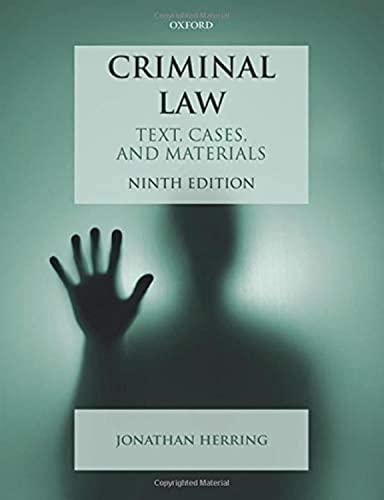Question
Question 1 Please read the judgment of the case Prasad v Hussein (1967) 13 FLR 98 and answer the following questions: (a) What was the
Question 1 Please read the judgment of the case Prasad v Hussein (1967) 13 FLR 98 and answer the following questions: (a) What was the plaintiff claim? What was the defendant's argument? (b) The court provided two reasons why he considered the plaintiff's claim must fail and said one of these two reasons was the more substantial one. What is the more substantial reason he gave? (c) The court referred to Masters v Cameron (1954) 91 C.L.R. 353, in which Dixon CJ discussed three classes of agreement 'on terms of a contractual nature' reached during business negotiation. What are they? Were the three classes of agreement binding contracts according to Dixon CJ? (d) Did the court think that there was a complete contract in this case? What were his reasons? (e) We discussed a few methods courts have used to clarify incomplete contracts. If you were the judge of this case, would you have used one or more of the discussed methods to clarify the contract? Question 2 Please read the case Sherani v Jagroop (1973) 19 FLR 85 and answer the following questions: (a) What was the plaintiff claim? What was the defendant's argument? (b) The judgment mentioned that 'the facts in this case are substantially not in dispute' (p3). What was the dispute(s)? (c) The court mentioned a few categories of situation giving rise to uncertainty. What are they? (d) Why did the court determine that the contract in the current case was uncertain? (e) We discussed a few methods courts have used to ascertain a contract. If you were the judge of this case, would you have used one or more of the discussed methods to ascertain the contract?
Step by Step Solution
There are 3 Steps involved in it
Step: 1

Get Instant Access to Expert-Tailored Solutions
See step-by-step solutions with expert insights and AI powered tools for academic success
Step: 2

Step: 3

Ace Your Homework with AI
Get the answers you need in no time with our AI-driven, step-by-step assistance
Get Started


